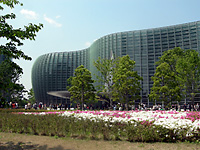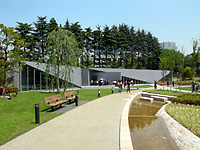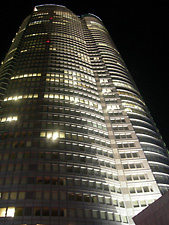ENQUETE
特集:200912 ゼロ年代の都市・建築・言葉 アンケート<アシュレイ・ローリングス
Urban Redevelopment in Roppongi
In terms of the art scene in Japan, the most significant development in the past ten years was the transformation of Roppongi into a new center for contemporary art. The Tokyo art scene is very
decentralized, with museums and galleries spread out all over the city, and until the early 2000s there were few guides to the art world, making it hard for both Japanese and foreign visitors to keep track of this very important part of Japan's contemporary culture.
The opening of the privately run Mori Art Museum within the Roppongi Hills complex in 2003 did a lot to change that, providing the city with a high-profile venue that promoted a bilingual, multicultural identity. Roppongi's status as Tokyo's new art center was cemented by 2007 with the opening of the striking Kisho-Kurokawa-designed National Art Center Tokyo(NACT), the corporate-run Suntory Museum of Art and the Tadao Ando-designed 21_21 Design Sight.
Though Roppongi is in one sense culturally richer, this urban redevelopment is not without problems. At street-level, the physical integration of Roppongi Hills into its surroundings is highly dystopian. The NACT has no permanent art collection of its own. Lacking state-funding it is overly reliant on ticket sales, and thus it operates more as a giant rental gallery, holding both commercially-minded shows of Impressionists and amateur painting and calligraphy exhibitions--there is little that is innovative in its exhibition program.
Though nobody should feel too nostalgic about Roppongi's sleazy history, its redevelopment has perhaps gone too far the other way. Roppongi shows that Japan is capable of producing some of the best arts infrastructure in the world, and yet it is also an example of state and corporate aspirations to global cultural prestige eclipsing local identity and needs.
-


- National Art Center Tokyo/21_21 Design Sight
六本木の再開発
日本のアートシーンにおいてこの10年間のもっとも重要な出来事は、2003年から、六本木が現代アートの新しい中心地へと変貌をとげていったことである。それまでは、東京のアートシーンにはおもだった中心がなく、美術館とギャラリーが点在し、アートガイドもほとんどなかった。そのことが日本人・外国人双方にとって、現代日本文化の重要な一翼を担う"アート"へのアクセスを難しいものにしていた。
2003年10月に開館した六本木ヒルズにあるプライベートミュージアム「森美術館」は、東京のバイリンガル・マルチカルチュアルなアイデンティティをつくったという意味で、その当時のシーンを大きく変化させた。さらに、2007年までに、黒川紀章の国立新美術館・サントリー美術館・安藤忠雄の21_21 DESIGN SIGHTが開館し、東京のアート中心地としての六本木の地位は確たるものとなった。
六本木はある意味で、文化度は高めたが、このような都市再開発にはけっして問題がないとはいえない。六本木ヒルズへの物理的な機能統合は、ストリートのレヴェルにディストピアを生みだした。国立新美術館は収蔵作品をもっていない。また、政府からの支援が少ないので、収入は、入場券の売り上げにひどく依存してしまう。その結果的、まるで巨大な貸し画廊となってしまい、印象派の作品展やアマチュアの絵画展と書道会などのコマーシャルマインドにあふれた展示ばかりになっている。展示プログラムにおいてはイノヴェーションがほとんどない。
以前の六本木がよりよかったというわけではないが、近年の再開発は過剰に感じる。それは、21世紀の六本木が日本が世界一のアートインフラを創設できることを世界に誇示する反面、政府と企業が国際的な文化的評価を望むことでローカルなアイデンティティを覆い隠してしまう一例でもあるのだ。
-

- 六本木ヒルズ
すべて筆者撮影





